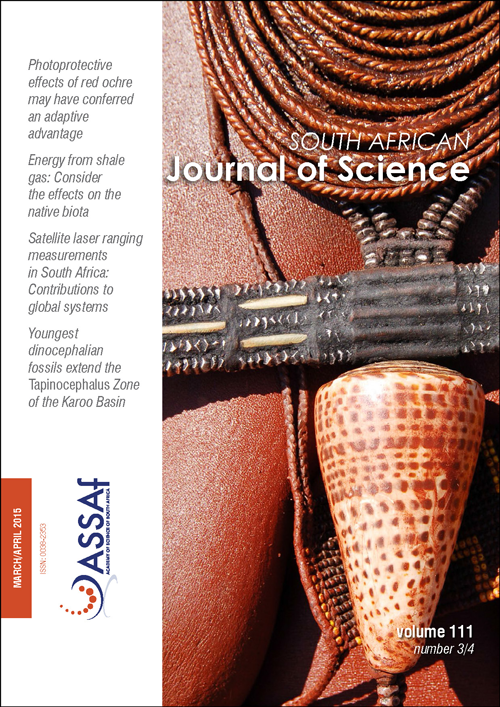Preliminary laboratory assessments of a lightweight geocomposite material for embankment fill application
DOI:
https://doi.org/10.17159/sajs.2015/20130262Keywords:
backfills, expanded polystyrenefriction coefficient, friction coefficient, texture, shear strengthAbstract
The cost of retaining structures used for the lateral support of roadside embankments can be significantly reduced through the use of lightly cemented mixtures of expanded polystyrene (EPS) beads and backfill soils as lightweight roadside embankment material. Four grades of residually derived sandy soils were mixed with EPS beads and the geocomposites were stabilised with 3% cement content, compacted and cured. The textural properties and shear strength parameters of dry and soaked specimens of the cemented geocomposites were determined by direct shear tests. The shear parameters and slope stability charts were used to simulate the slope of typical road embankments. The settlement potentials at different applied normal stresses were also determined. Inclusion of EPS reduced the dry density of the residual soils from an average value of 1790 kg/m3 to 1335 kg/m3. The maximum friction coefficient, tan ᴓ′, mobilised by the geocomposite specimens decreased with an increase in the soil fines content (>0.425 mm). The difference in tan ᴓ′ between the stabilised geocomposites and the natural soil was also dependent on the fines content. For an embankment height of 20 m, slope angles of 38° and 62° were determined for fine sand geocomposites in fully saturated drainage and drained conditions, respectively. Lower slope angles were determined for geocomposites made from silty, coarse and gravelly sands. A limiting embankment height of 50 m was determined for the four geocomposites. Rainfall-induced settlement of geocomposites was dependent on pre-inundation stiffness; for the range of applied stress up to 200 kPa, the settlement exhibited by the fine and silty sand geocomposites was lower than that for the coarse and gravelly sand geocomposites. Fine and silty sands make poor materials for slope embankments because of their poor hydraulic conductivity; however, fine and silty sand geocomposites have a good conductivity and friction angle to support slope embankments.
Published
Issue
Section
License

All articles are published under a Creative Commons Attribution 4.0 International Licence
Copyright is retained by the authors. Readers are welcome to reproduce, share and adapt the content without permission provided the source is attributed.
Disclaimer: The publisher and editors accept no responsibility for statements made by the authors
How to Cite
- Abstract 357
- PDF 408
- EPUB 186
- XML 236












.png)